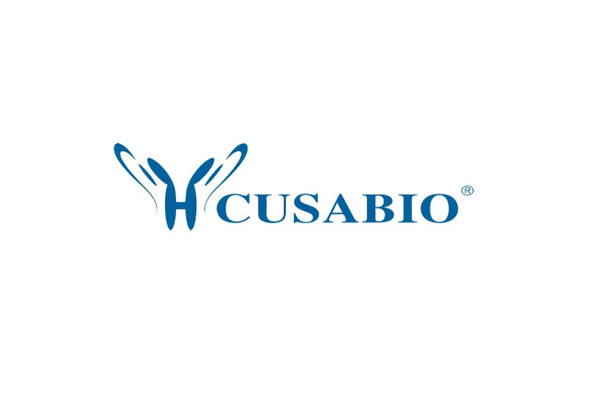Cusabio Human Recombinants
Recombinant Human Leucine-rich repeat-containing G-protein coupled receptor 5 (LGR5), partial | CSB-YP012906HU
- SKU:
- CSB-YP012906HU
- Availability:
- 25 - 35 Working Days
Description
Recombinant Human Leucine-rich repeat-containing G-protein coupled receptor 5 (LGR5), partial | CSB-YP012906HU | Cusabio
Alternative Name(s): G-protein coupled receptor 49G-protein coupled receptor 67G-protein coupled receptor HG38
Gene Names: LGR5
Research Areas: Cancer
Organism: Homo sapiens (Human)
AA Sequence: GSSPRSGVLLRGCPTHCHCEPDGRMLLRVDCSDLGLSELPSNLSVFTSYLDLSMNNISQLLPNPLPSLRFLEELRLAGNALTYIPKGAFTGLYSLKVLMLQNNQLRHVPTEALQNLRSLQSLRLDANHISYVPPSCFSGLHSLRHLWLDDNALTEIPVQAFRSLSALQAMTLALNKIHHIPDYAFGNLSSLVVLHLHNNRIHSLGKKCFDGLHSLETLDLNYNNLDEFPTAIRTLSNLKELGFHSNNIRSIPEKAFVGNPSLITIHFYDNPIQFVGRSAFQHLPELRTLTLNGASQITEFPDLTGTANLESLTLTGAQISSLPQTVCNQLPNLQVLDLSYNLLEDLPSFSVCQKLQKIDLRHNEIYEIKVDTFQQLLSLRSLNLAWNKIAIIHPNAFSTLPSLIKLDLSSNLLSSFPITGLHGLTHLKLTGNHALQSLISSENFPELKVIEMPYAYQCCAFGVCENAYKISNQWNKGDNSSMDDLHKKDAGMFQAQDERDLEDFLLDFEEDLKALHSVQCSPSPGPFKPCEHLLDGWLIR
Source: Yeast
Tag Info: N-terminal 6xHis-tagged
Expression Region: 22-561aa
Sequence Info: Partial
MW: 62.4 kDa
Purity: Greater than 90% as determined by SDS-PAGE.
Relevance: Receptor for R-spondins that potentiates the canonical Wnt signaling pathway and acts as a st cell marker of the intestinal epithelium and the hair follicle. Upon binding to R-spondins (RSPO1, RSPO2, RSPO3 or RSPO4), associates with phosphorylated LRP6 and frizzled receptors that are activated by Extracellular domain Wnt receptors, triggering the canonical Wnt signaling pathway to increase expression of target genes. In contrast to classical G-protein coupled receptors, does not activate heterotrimeric G-proteins to transduce the signal. Involved in the development and/or maintenance of the adult intestinal st cells during postbryonic development.
Reference: Identification and cloning of an orphan G protein-coupled receptor of the glycoprotein hormone receptor subfamily.McDonald T., Wang R., Bailey W., Xie G., Chen F., Caskey C.T., Liu Q.Biochem. Biophys. Res. Commun. 247:266-270(1998)
Storage: The shelf life is related to many factors, storage state, buffer ingredients, storage temperature and the stability of the protein itself. Generally, the shelf life of liquid form is 6 months at -20?/-80?. The shelf life of lyophilized form is 12 months at -20?/-80?.
Notes: Repeated freezing and thawing is not recommended. Store working aliquots at 4? for up to one week.
Function: Receptor for R-spondins that potentiates the canonical Wnt signaling pathway and acts as a stem cell marker of the intestinal epithelium and the hair follicle. Upon binding to R-spondins (RSPO1, RSPO2, RSPO3 or RSPO4), associates with phosphorylated LRP6 and frizzled receptors that are activated by extracellular Wnt receptors, triggering the canonical Wnt signaling pathway to increase expression of target genes. In contrast to classical G-protein coupled receptors, does not activate heterotrimeric G-proteins to transduce the signal. Involved in the development and/or maintenance of the adult intestinal stem cells during postembryonic development.
Involvement in disease:
Subcellular Location: Cell membrane, Multi-pass membrane protein, Golgi apparatus, trans-Golgi network membrane, Multi-pass membrane protein
Protein Families: G-protein coupled receptor 1 family
Tissue Specificity: Expressed in skeletal muscle, placenta, spinal cord, and various region of brain. Expressed at the base of crypts in colonic and small mucosa stem cells. In premalignant cancer expression is not restricted to the cript base. Overexpressed in cancers of the ovary, colon and liver.
Paythway:
Form: Liquid or Lyophilized powder
Buffer: If the delivery form is liquid, the default storage buffer is Tris/PBS-based buffer, 5%-50% glycerol. If the delivery form is lyophilized powder, the buffer before lyophilization is Tris/PBS-based buffer, 6% Trehalose, pH 8.0.
Reconstitution: We recommend that this vial be briefly centrifuged prior to opening to bring the contents to the bottom. Please reconstitute protein in deionized sterile water to a concentration of 0.1-1.0 mg/mL.We recommend to add 5-50% of glycerol (final concentration) and aliquot for long-term storage at -20?/-80?. Our default final concentration of glycerol is 50%. Customers could use it as reference.
Uniprot ID: O75473
HGNC Database Link: HGNC
UniGene Database Link: UniGene
KEGG Database Link: KEGG
STRING Database Link: STRING
OMIM Database Link: OMIM









